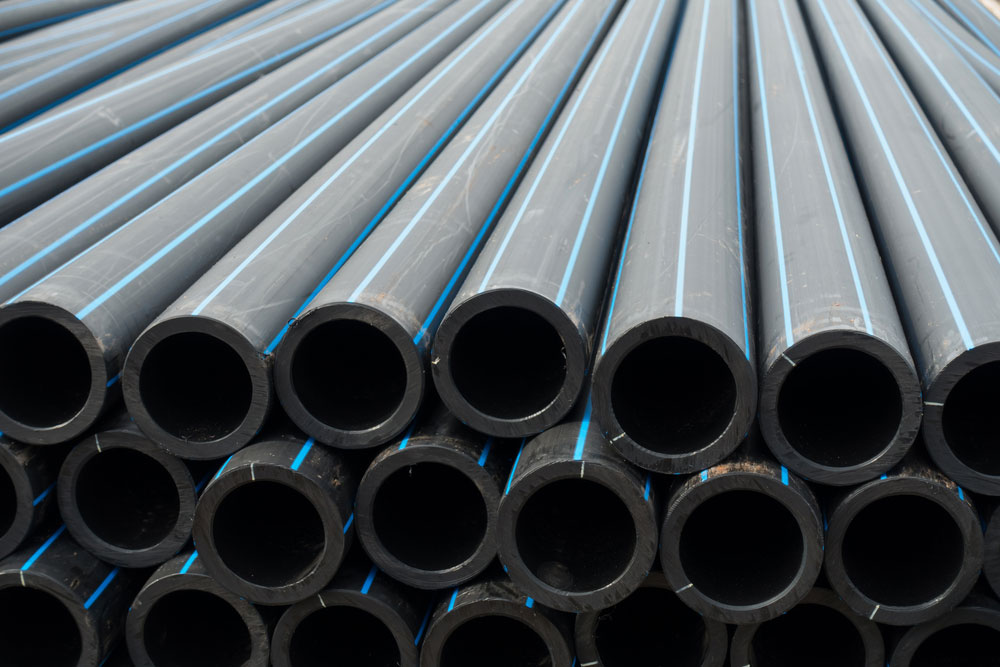How American Plastics HDPE Pipe for Oilfield Supports Energy Infrastructure
Wiki Article
Understanding the Key Conveniences of HDPE Pipeline for Water and Wastewater Management
The usage of HDPE pipeline in water and wastewater administration provides numerous advantages that merit consideration. Its phenomenal longevity and long lifespan make it a recommended option for lots of jobs. Furthermore, the product's resistance to corrosion and chemical damages improves its dependability in various settings. The benefits expand past just durability and resistance. American Plastics HDPE Pipe for Oilfield. Discovering its cost-effectiveness and ecological effect discloses also a lot more compelling factors for its extensive adoption in modern-day facilitiesExtraordinary Durability and Longevity

HDPE pipe attracts attention for its phenomenal resilience and longevity, making it a favored selection in water administration systems. Constructed from high-density polyethylene, these pipelines can hold up against substantial stress and anxiety, ensuring dependable performance in time. Their durable nature allows them to sustain severe ecological conditions, including temperature level fluctuations and dirt activities, which can trigger various other products to stop working.
The life-span of HDPE pipes frequently goes beyond half a century, offering a cost-efficient option for districts and markets alike. In addition, the product's lightweight buildings simplify setup, decreasing labor prices and timeframes. This durability lessens the requirement for frequent repairs or replacements, even more improving its financial charm.
In water monitoring applications, the dependability of HDPE pipelines means less disturbances and improved service connection, making them indispensable to sustainable framework growth. The combination of durability and longevity solidifies HDPE's role as a keystone in efficient water administration options.

Resistance to Deterioration and Chemical Damage
While several products give in to corrosion and chemical damage over time, HDPE pipelines display exceptional resistance, making them suitable for different water management applications. This durability comes from the molecular structure of high-density polyethylene, which is naturally non-reactive and does not rust like metals or break down from direct exposure to rough chemicals. Therefore, HDPE is very effective in settings with aggressive materials, such as wastewater systems that may contain acids, bases, and organic solvents.
In addition, HDPE pipes can endure ecological aspects such as dirt level of acidity and saline problems, better boosting their viability for varied applications (Midland TX HDPE Pipe Fittings in Stock). Their capability to maintain structural integrity gradually minimizes the risk of leaks and failures, which is crucial in guaranteeing the security and reliability of water distribution and wastewater monitoring systems. The resistance to rust and chemical damage considerably adds to the total performance and long life of HDPE piping remedies.
Cost-Effectiveness and Financial Benefits
When considering the economic implications of water monitoring systems, the cost-effectiveness of HDPE pipelines ends up being obvious. These pipelines use lower setup and upkeep costs contrasted to standard products like steel or concrete. Their light-weight nature simplifies transport and setup, leading to lowered labor costs. Furthermore, HDPE pipelines display a long lifespan, typically surpassing 50 years, which translates to fewer replacements and lasting cost savings.Furthermore, the resistance of HDPE to rust and chemical damages minimizes the requirement for pricey repairs and replacements. The pipes also support effective water circulation, decreasing energy expenses connected with pumping systems. By minimizing leakages and water loss, HDPE pipes contribute to considerable economic benefits for municipalities and industries alike. In general, the preliminary investment in HDPE piping can produce significant financial returns over the life expectancy of the water monitoring system, making it a prudent choice for lasting facilities growth.
Ecological Sustainability and Minimized Influence

Convenience and Flexibility in Setup
Because of their one-of-a-kind homes, HDPE pipelines use remarkable convenience and flexibility in installation, making them appropriate for a vast array of applications. Their lightweight nature permits easier handling and transport, decreasing labor prices and installation time. HDPE pipelines can be bent and shaped to fit different surfaces and project demands, which is particularly valuable in challenging environments.In addition, their resistance to deterioration and chemical damages enables installation in diverse settings without the demand for specialized protective finishes. The capacity to fuse joints produces a continuous, leak-free system, boosting the general integrity and reliability of the get more info setup. HDPE's adaptability also suits ground motion, decreasing the risk of damage in areas vulnerable to moving dirt. On the whole, these characteristics make HDPE pipelines not just functional however additionally a preferred choice for water and wastewater management systems.
Regularly Asked Questions
Exactly How Does HDPE Pipeline Compare to PVC in Water Monitoring Applications?
HDPE pipeline offers exceptional versatility, resistance to rust, and sturdiness compared to PVC. Its lighter weight assists in less complicated setup, while its lengthy life expectancy reduces replacement expenses, making HDPE a recommended option in water monitoring applications.What Is the Lifespan of HDPE Pipeline Under Normal Conditions?
Under common conditions, HDPE pipelines can have a life expectancy ranging from 50 to 100 years. Their toughness and resistance to corrosion add to their lasting performance in various applications, making them a trusted selection for infrastructure.Are HDPE Pipes Recyclable After Their Service Life?
Yes, HDPE pipes are recyclable after their life span. Pipe Manufacturing Midland TX. They can be processed and repurposed into new items, significantly decreasing ecological effect and advertising sustainability within the market, making them an environmentally friendly choice for piping solutionsWhat Is the Installment Process for HDPE Water Lines?
The installation procedure for HDPE pipelines involves website prep work, trenching, pipe blend or mechanical joining, backfilling, and pressure screening. Proper methods assure a long lasting and reliable system for carrying water and wastewater successfully.Can HDPE Pipeline Be Utilized for Both Safe And Clean and Non-Potable Water Systems?
Yes, HDPE pipes can be made use of for both safe and clean and non-potable water systems. Their adaptability, durability, and resistance to corrosion make them appropriate for numerous applications, making certain safe and effective transport of water in various contexts.Report this wiki page